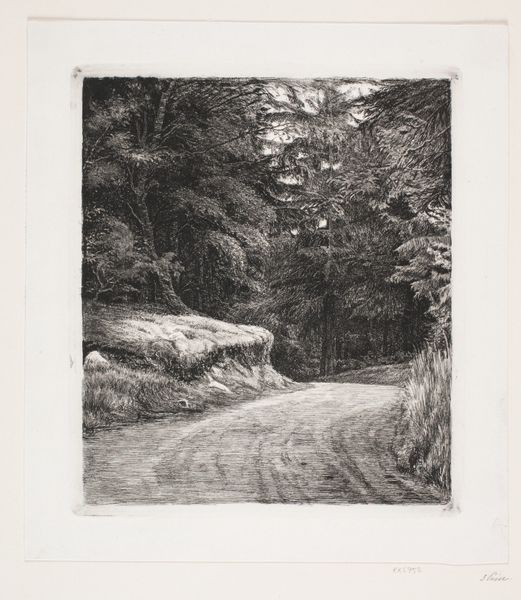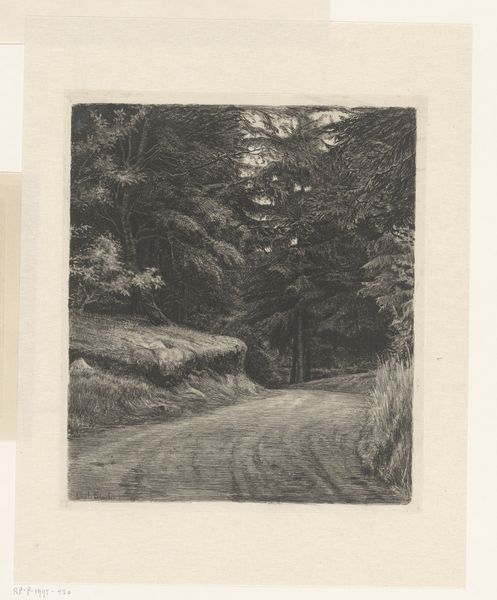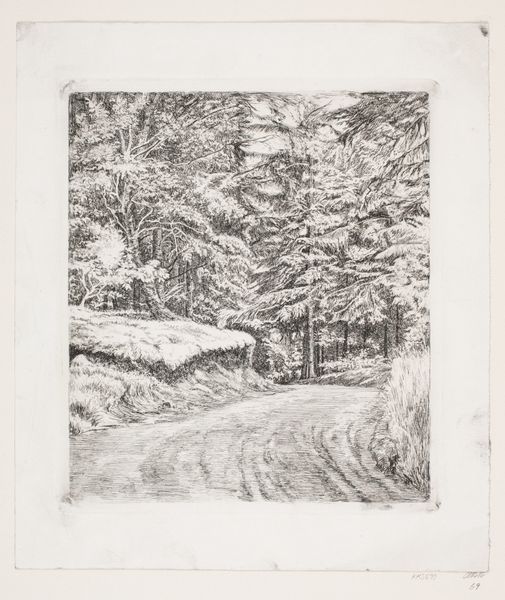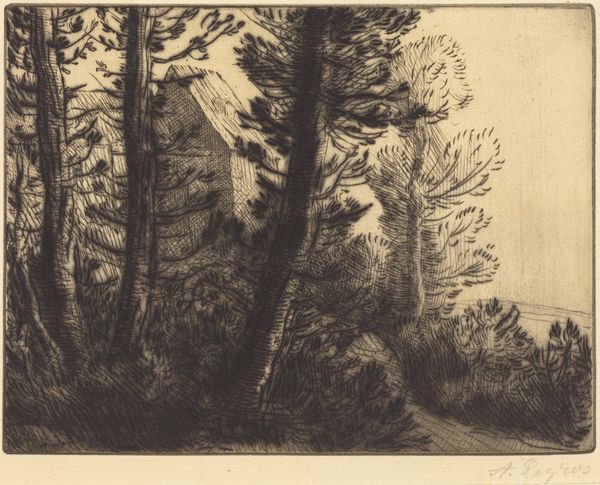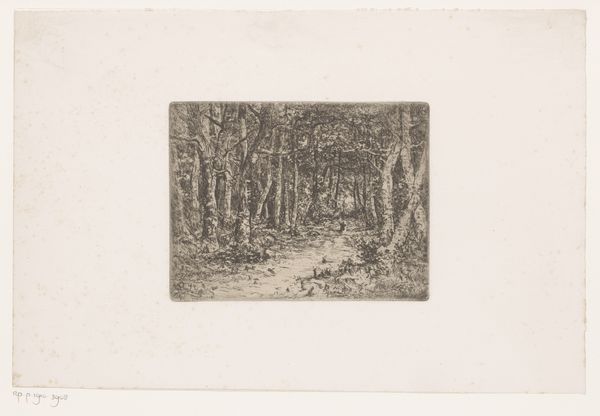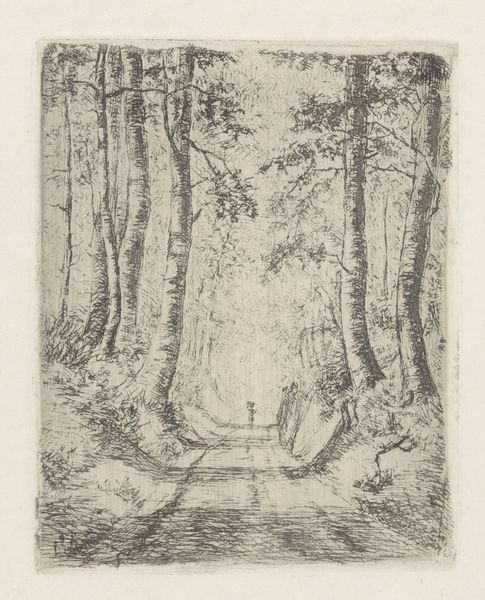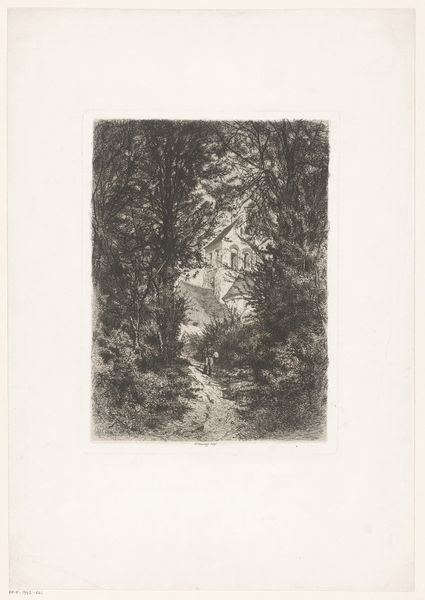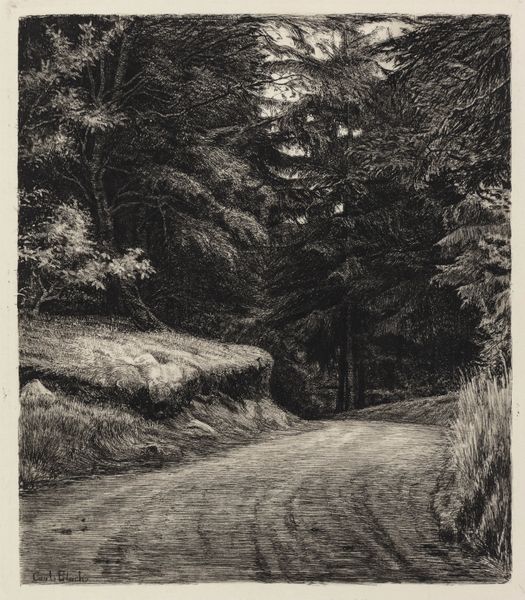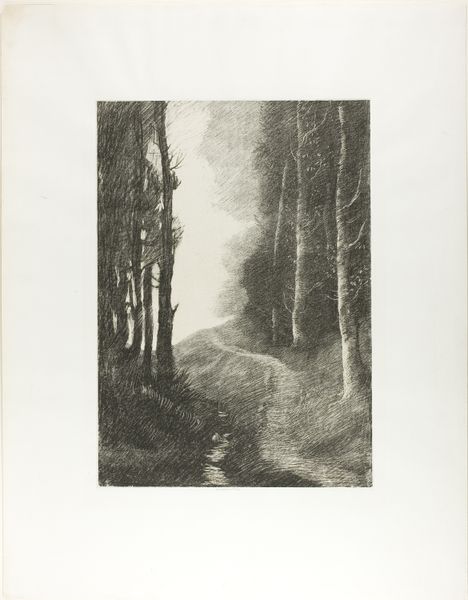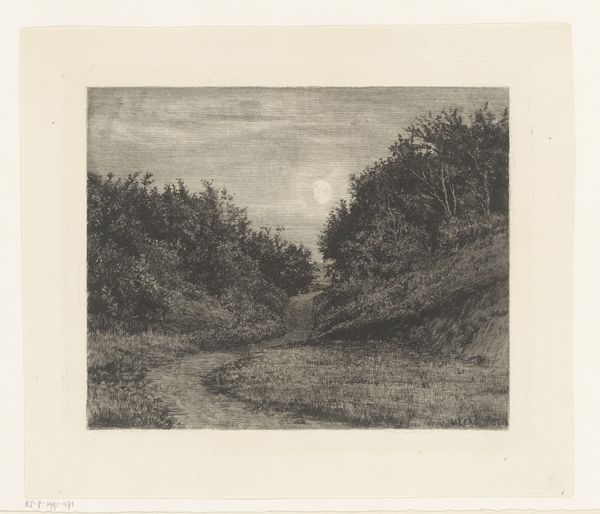
print, etching
# print
#
etching
#
landscape
#
northern-renaissance
#
realism
Dimensions: 252 mm (height) x 223 mm (width) (bladmaal), 207 mm (height) x 184 mm (width) (plademaal)
Carl Bloch made this print of a forest road using etching, a process with a fascinating history. Etching involves covering a metal plate with a waxy, acid-resistant ground. The artist then scratches an image into this ground, exposing the metal. When the plate is submerged in acid, the exposed lines are eaten away, creating grooves. Ink is applied to these grooves, the surface wiped clean, and the image transferred to paper under high pressure in a printing press. The result is a delicate dance between control and chance. The artist’s hand guides the needle, but the acid introduces an element of unpredictability, giving the lines a characteristic bitten quality. We see this clearly in the fine network of lines that make up the trees, the road, and the play of light and shadow. The social significance here is twofold. First, the printmaking process allowed for wider distribution of images, democratizing art. Second, the image itself, a humble forest road, speaks to a growing appreciation for the natural world, reflecting broader cultural shifts in 19th-century Denmark. By attending to these materials, making, and context, we can come to a fuller appreciation of this image.
Comments
No comments
Be the first to comment and join the conversation on the ultimate creative platform.

